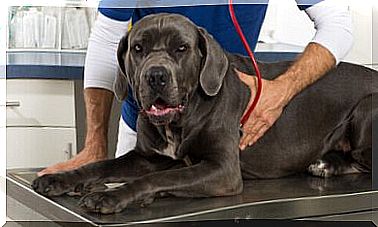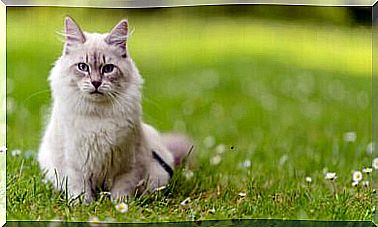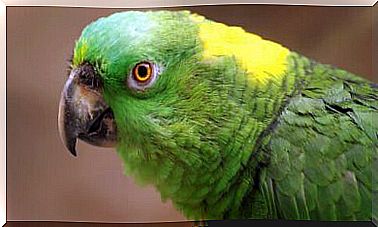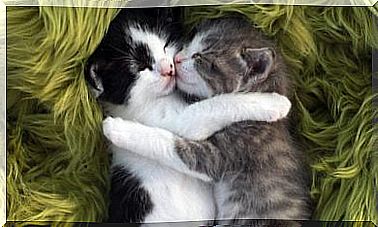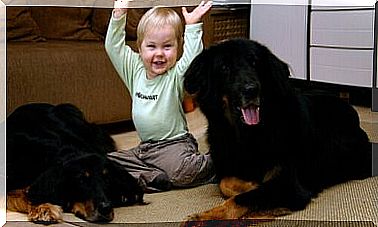The Afghan Hound, An Ancient Breed
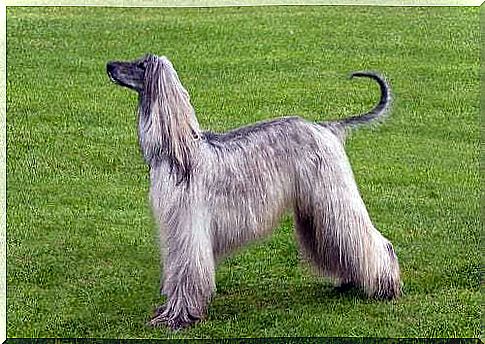
The Afghan Hound is a large dog that belongs to the greyhound and hunting dog family. It is distinguished by its very long and thick hair that even touches the ground. The Afghan hound is a very ancient breed, it is a really interesting dog.
He has a very special temperament, energetic and at the same time elegant and affectionate. Read on to learn more about the Afghan Hound, a very ancient breed.
Physical characteristics of the Afghan hound
The Afghan hound is a large, tall and elegant dog, with a stylized body with subtle and harmonious shapes. The long, smooth and silky hair that covers its entire body and reaches the ground is the characteristic that makes it unique and easily recognizable.
Despite having very long and voluminous hair, the Afghan hound is very agile and maintains a certain elegance of movements. The long ears that drop to the sides help shape its mild expression.
This dog’s head and facial expressions give it a refined air. In addition, they are a very expressive and sensitive breed that usually creates a very special bond with their owners.
Despite having a lean and slender physiognomy, the Afghan hound is a strong dog, with well-developed musculature and considerable physical stamina. Its bones are long and prominent, its chest is broad, and its legs are straight and firm. The Afghan hound is a very ancient breed, has a curled tail in the shape of a ring.

It can have the hair of different shades and colors. However, the most common specimens are cream or sandy in color with a black or brown body part.
Personality and character of the Afghan hound
The Afghan hound has a very special temperament. He is an independent and serene dog who, at the same time, is very affectionate, loyal and attached to his family. They can also develop a great sense of protection towards their owners, so it is important to educate them properly to socialize from an early age.
In his household, the Afghan hound is an affable, calm and balanced companion, who gets along very well with children. It is a highly sociable animal.
The presence of strangers can cause these animals a little distrust, but they are usually not aggressive. Their relationship with other pets will mainly depend on their degree of socialization, but they usually get used to the company of other dogs very easily.
Like all greyhounds, the Afghan hound is energetic and needs a high dose of daily physical activity to maintain a healthy weight and balanced behavior. It would be advisable to make him move freely in a large and safe space, in addition to going out regularly for daily walks.
How to take care of the Afghan hound
The long and silky coat of the Afghan hound requires quite demanding maintenance, in order to preserve its beauty and the health of your pet. Daily brushing is essential to avoid knots and dirt accumulation.
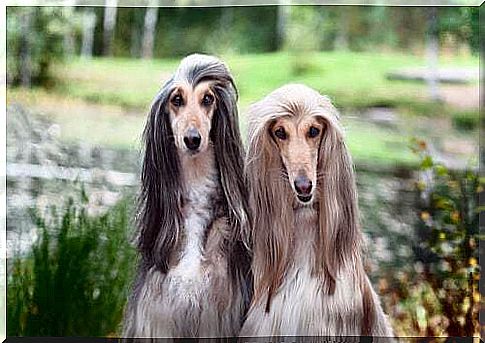
If he lives in a large house or a spacious apartment, you can wash him once a month or every six weeks. However, the outdoors may require more frequent hygiene.
Do not hesitate to rely on a specialist to keep the hair of the appropriate length. During the summer, a shorter cut may be necessary, to decrease the volume of the fur due to the heat.
Like all dogs, the Afghan Hound must receive a complete and balanced diet to fully develop their physical, cognitive and emotional abilities. To choose the most suitable diet for your best friend, we recommend that you rely on your veterinarian.
Health and life expectancy
In general, the health of the Afghan hound is very healthy and resilient, with a life expectancy of between 12 and 14 years. With proper preventive medicine and proper care, they hardly get sick and can enjoy a very healthy life.
However, it is worth remembering that large Afghan hounds can develop some common conditions, such as hip dysplasia and elbow malformation. Additionally, greyhounds are often sensitive to exposure to irritating or corrosive chemicals, as well as medications containing cortisone or tranquilizers.
In addition, it is important to respect the vaccination card and practice deworming. Visits to the vet every six months will be essential to check the health of your pet and offer him an optimal quality of life.

